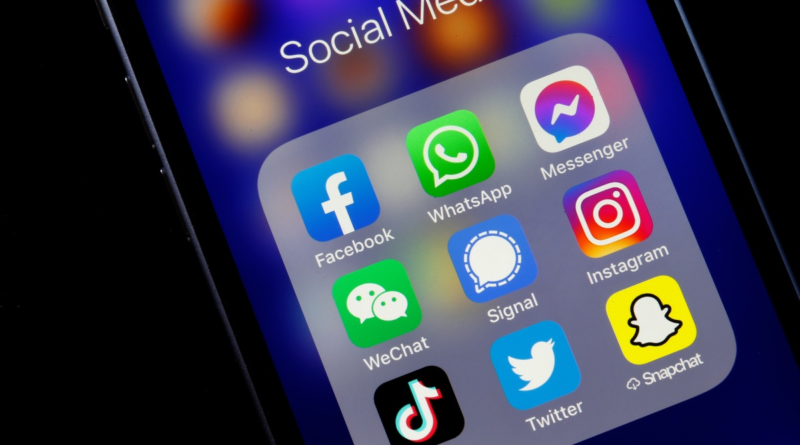The surgeon general’s advisory on risks of youth social media use could shift the conversation
A new public health warning this week from the U.S. surgeon general explores concerns that social media use among children and teens poses serious risks that science has only just begun to understand.
“… The current body of evidence indicates that while social media may have benefits for some children and adolescents, there are ample indicators that social media can also have a profound risk of harm to the mental health and well-being of children and adolescents,” U.S. Surgeon General Dr. Vivek Murthy wrote in the advisory. “At this time, we do not yet have enough evidence to determine if social media is sufficiently safe for children and adolescents.”
The advisory acknowledges the positive impacts of youth social media use, noting that social platforms connect young people with others who share their interests and identities while fostering self expression. These upsides are well-explored and basically ubiquitous at this point, but the more hidden, potentially lasting negative effects of social media on young people are much less explored.
“Nearly every teenager in America uses social media, and yet we do not have enough evidence to conclude that it is sufficiently safe for them,” the advisory warns. “Our children have become unknowing participants in a decades-long experiment.”
Like many phenomena that grew out of the tech scene, social media indeed moved fast while breaking things over the course of the last decade and change, reshuffling social behavior and the human brain in the process. While the adult brain is settled enough to weather those changes, this report and others raise the alarm that children and adolescents are now regularly exposed to forces that can have lasting negative impacts on brain and behavior alike.
“Adolescents, ages 10 to 19, are undergoing a highly sensitive period of brain development,” Murthy wrote. “…In early adolescence, when identities and sense of self-worth are forming, brain development is especially susceptible to social pressures, peer opinions, and peer comparison.”
A recent study from researchers at the University of North Carolina at Chapel Hill imaged middle schoolers’ brains and found that how frequently they checked social media apps (Facebook, Instagram, Snapchat) correlated with changes in the amygdala that mapped onto ongoing sensitivity toward rewards and punishments. Other studies have explored how rejection on social media could affect structures in the brain that respond to social stimuli, noting that these responses are amplified in young, developing brains.
“Because adolescence is a vulnerable period of brain development, social media exposure during this period warrants additional scrutiny,” Murthy wrote.
The advisory acknowledges the disproportionate burden that parents and families now shoulder, navigating social media use without adequate tools or resources to properly protect young people from its potential harms. Murthy calls on policymakers and tech companies to come together for a “multifaceted approach” that the U.S. has followed with other products that pose risks to children:
The U.S. has a strong history of taking action in such circumstances. In the case of toys, transportation, and medications—among other sectors that have widespread adoption and impact on children—the U.S. has often adopted a safety-first approach to mitigate the risk of harm to consumers. According to this principle, a basic threshold for safety must be met, and until safety is demonstrated with rigorous evidence and independent evaluation, protections are put in place to minimize the risk of harm from products, services, or goods.
The surgeon general’s specific policy recommendations include implementing higher standards for youth data privacy, enforced age minimums, deepening research in these areas and weaving digital media literacy education into curriculums.
A report earlier this month from the American Psychological Association also flagged the potential serious downsides of social media on developing brains and encouraged an open dialogue between kids and parents around their online activity. While that report and the surgeon general’s advisory ultimately frame social media as a neutral tool that is “not inherently beneficial or harmful to young people,” the latter presents the issue in the frame of a public health crisis, calling for urgent action to mitigate the potential harm of developing minds increasingly steeping in online spaces.
While the advisory itself isn’t guaranteed to move the needle, it does usefully present youth social media use as a public health crisis — a shift for an issue that is often punted to parents or defined by tech companies’ own rosy talking points. In the past, surgeon general’s advisories have reshaped the national dialogue around public health threats like smoking and drunk driving. They’ve also kicked off eras of evidence-free scaremongering, like a 1982 advisory that warned video games were hazardous to young people. (Unlike that advisory, Murthy’s new report is paired with a much deeper emerging body of scientific evidence.)
The White House followed the surgeon general’s office with its own proposal to launch an interagency task force on the issue, bringing agencies including the Department of Education, the FTC and the DOJ together to coordinate on the youth mental health crisis. What will come of these advisories remains to be seen — and many different political agendas masquerade as efforts to protect children. Task forces have a reputation for inefficacy, but slowly steering the conversation around social media and kids’ mental health toward a public health framing could prove useful in the long term.
The issue comes up time and time again in congressional hearings, but the possibility of thoughtful U.S. regulation addressing tech’s ability to manipulate the behavior of young users while monetizing their data continues to take a backseat to partisan politics and political grandstanding. While the EU passes meaningful new rules for social media like the Digital Services Act, lawmakers in the U.S. continue to fail on core, cross-platform issues like data privacy and dangerous content.
“Our children and adolescents don’t have the luxury of waiting years until we know the full extent of social media’s impact,” the advisory warns. “Their childhoods and development are happening now.”




